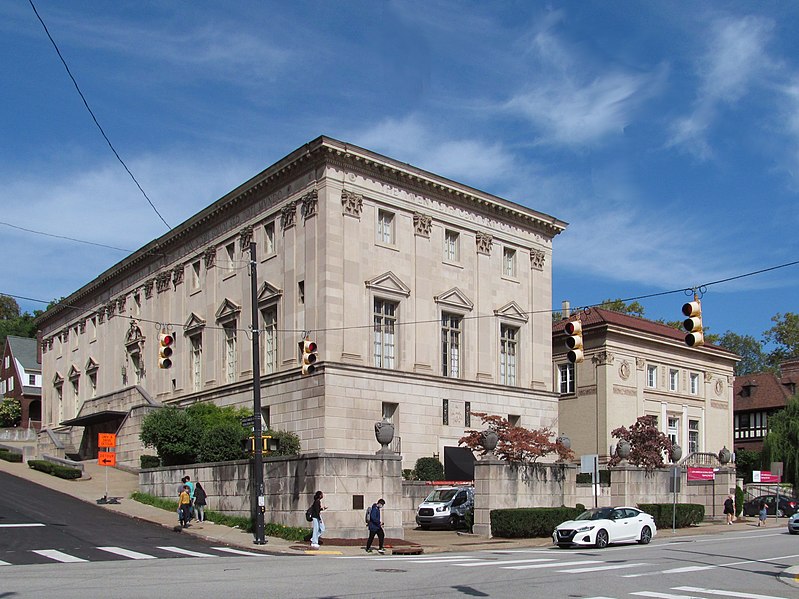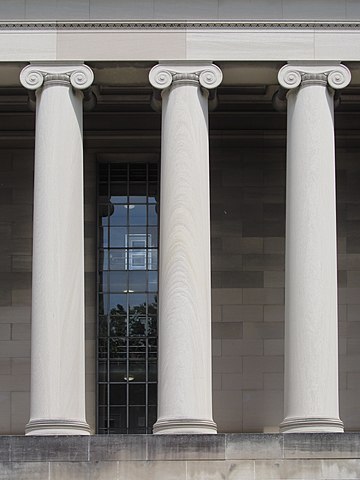
If your club was prospering, you could have a clubhouse by Benno Janssen, Pittsburgh’s favorite club architect. Among the club buildings he designed that are still standing we may mention the Twentieth Century Club, the Keystone Athletic Club, the Pittsburgh Athletic Association, the Masonic Temple, and this one, a cultural and athletic center that was one of the ancestors of today’s Jewish Community Center. Like several of Janssen’s other club buildings, this one, built in 1924, takes the form of a Renaissance palace. The building now belongs to Pitt, of course, which calls it Bellefield Hall and still keeps up its splendid indoor swimming pool.

The university has glassed in the huge arch that forms the main entrance; old Pa Pitt has ruthlessly manipulated this picture to bring the inscription out from behind the glass.

Father Pitt imagines the sculptor, having worked months to intertwine the letters Y, M, W, and H in this artistic cartouche, proudly presenting his work to Mr. Janssen and being told, “You left out the A.”

A view of the building from Heinz Chapel’s new formal garden across the street.

















